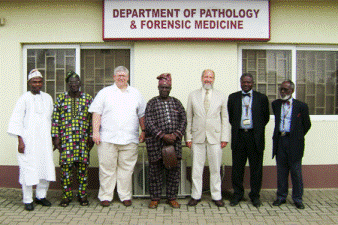Natural Resources, School of

Karl Reinhard Publications
Document Type
Article
Date of this Version
2018
Citation
Comp. Parasitol. 85(1), 2018, pp. 27–33
Abstract
One hundred coprolites excavated from La Cueva de los Muertos Chiquitos (600–800 CE) in the Rio Zape Valley of present-day Durango, Mexico, were examined for the presence of helminth eggs utilizing standard archaeoparasitological techniques. Eggs of the human pinworm (Enterobius vermicularis) were recovered from 34 of the 100 coprolites examined. Eggs of parasites were photographed and measured before egg concentration values were calculated for each positive sample. Egg concentration values demonstrated an overdispersed pattern of distribution among the samples (66% uninfected, 25% less than 100 eggs/g, 8% between 100 and 500 eggs/g, and 1% more than 500 eggs/g). Given that only 5% of infected hosts in modern cases of human enterobiasis pass the eggs of parasites in their stools, the recovery of E. vermicularis eggs in 34% of the coprolites supports the conclusion that virtually all of the individuals utilizing the site during the coprolite depositional time frame likely were infected with this parasite. These data are discussed in light of other studies of prehistoric human enterobiasis.
Included in
Archaeological Anthropology Commons, Ecology and Evolutionary Biology Commons, Environmental Public Health Commons, Other Public Health Commons, Parasitology Commons


Comments
Published by The Helminthological Society of Washington